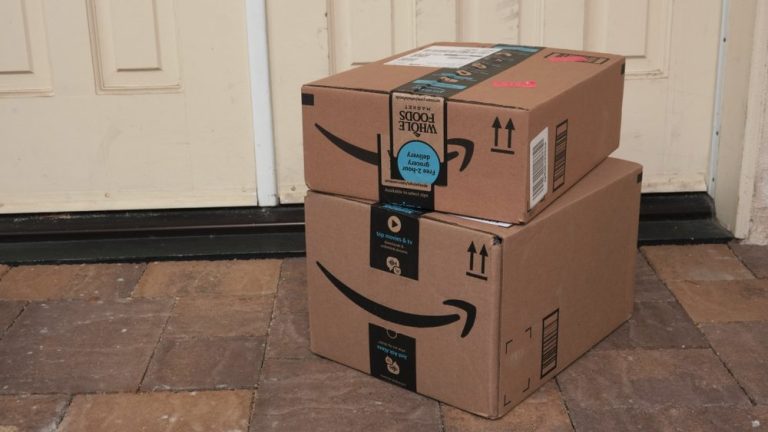Amazon Takes a Bite Out of Traditional Grocery Sales

Grocers may want to watch their backs because Amazon is gunning to grow its share.
On a call with analysts Thursday (Feb. 2) discussing the eCommerce giant’s fourth quarter 2022 financial results, the company asserted that the extent of its grocery presence tends to go underestimated.
“If you think about the online grocery offering, we have a very large business there,” Amazon CEO Andy Jassy said. “If you think about the aisles in a grocery store, from packaged food to paper products to canned goods to pet supplies to health and personal care items to consumables, we have a very large business there that continues to grow at a rapid clip and then we think will continue to grow.”
He added that the company’s growth in the categories one would typically find at the supermarket is “continuing to accelerate.”
Indeed, Amazon has been gaining share in center-aisle categories with the discounts it offers via its Subscribe & Save program. Subscribers remain loyal even as inflation has many consumers unsubscribing from other services, as the November edition of the Subscription Commerce Conversion Index study, “The Subscription Commerce Conversion Index: Subscribers Seek Affordability and Convenience,” a PYMNTS and sticky.io collaboration, notes.
The study, drawn from a survey of more than 2,100 U.S. consumers, found that 42% of consumers with product subscriptions participate in the program, and only 10% of them would consider canceling in the next year, a significantly smaller share than said the same of other kinds of subscriptions.
PYMNTS’ Karen Webster spoke to the popularity of the program and the threat it poses to grocers.
“Subscription services such as Amazon Subscribe & Save and [direct-to-consumer (D2C)] specialty brands are whittling away the center aisle purchases from grocery stores — of course, at different paces with different merchants in different countries — and will for some time,” Webster noted.
Plus, it is not only the center aisles that grocers need to be worried about. Jassy observed that Amazon “doesn’t have a big market segment share in perishables,” given that in-person shopping remains the most popular way consumers purchase fresh foods. Still, the company is growing its brick-and-mortar grocery presence.
Jassy noted that the Whole Foods Market business is “continuing to grow” and becoming more profitable while the company is still tinkering with the Amazon Fresh model. Recent reports have shown Fresh stores sitting empty and unopened.
“We’ve decided over the last year or so that we’re not going to expand the physical Fresh stores until we have that equation with differentiation and economic value that we like, but we’re optimistic that we’re going to find that in 2023,” Jassy said. “When we do find that equation, we will expand it more expansively. But I think that we have a very significant opportunity in the grocery segment.”
Amazon’s grocery expansion poses bad news for traditional supermarket chains, which are under increasing threat from category giants. Now, they must hold their own against supercenter behemoth Walmart and the newly-combined Kroger-Albertsons powerhouse and Amazon, leaving smaller grocery chains in an even more challenging competitive environment than before.